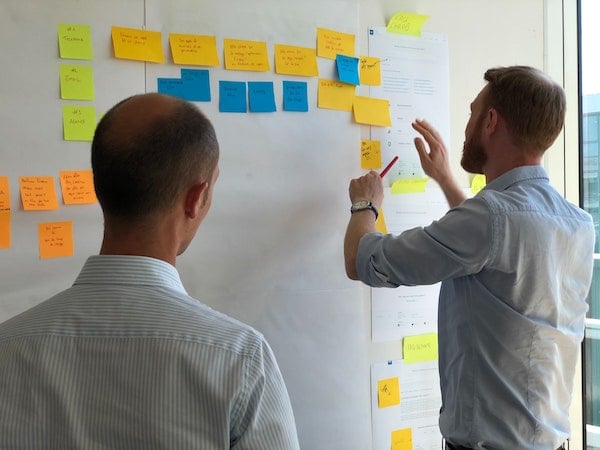Published on
Using the Pandemic as a Springboard: 3 Actionable Takeaways

While we’re not yet post-pandemic, most institutions are planning for a return to campus in summer or fall 2021, after relying on a mix of primarily remote and online learning for over a year. During that time, institutions sought to ensure academic continuity and student success by investing time and resources in necessary technology infrastructure and supporting faculty and students’ acclimation to a distance learning environment. Now in its fifth year, the Changing Landscape of Online Education (CHLOE) Survey finds Chief Online Officers looking forward and reveals how institutions are poised to capitalize on both their investments and successes from the past year. Below are three actionable takeaways from CHLOE 6: Online Learning Leaders Adapt for a Post-Pandemic World.
Action 1: Prepare for Online Growth Based on Remote Learning Momentum
When asked about future online undergraduate enrollment, only 13% of Chief Online Officers (COOs) expected the moderate growth seen in pre-pandemic years, while 77% predicted some or major acceleration in this trend. Predictions were also positive for graduate enrollment, with 80% of COOs expecting some or strongly increased enrollment. More interestingly, these predictions were similar across institutions of all types, including those with traditionally low levels of online emphasis and enrollment.
Fortunately, most institutions, having spent the pandemic shoring up technology infrastructure and other institutional supports, seem well prepared to welcome new online students. Almost 80% of COOs reported investments in technology hardware and software licenses, and nearly 40% used funds to support faculty development. Significant growth was also reported in measures to ensure academic integrity, support video recording/distribution and virtual labs. Most COOs reported additional resources made available for online learning, in some cases noting the importance of the CARES Act. It makes fiscal sense for institutions to capitalize on these investments to attract new online students and even create new online programs.
In fact, many institutions, eager to use remote courses as a catalyst, are setting their sights on new online programs and consequent online enrollment growth. When asked about the likelihood that remote courses will evolve into fully online programs, nearly 60% of COOs reported it was likely for some subjects, and 9% reported it was very likely overall. Public, two-year college representatives were even more emphatic, with 72% saying some new online programs were likely. When asked about graduate programs emerging from remote courses, 57% reported it was likely in some subjects and 15% termed it very likely overall. In general, optimism—both in terms of enrollment and new programming—seems high, pointing toward increased competition for online students in the coming years.
Institutions would be well advised to capitalize on the momentum or positivity generated by the pandemic’s forced shift into fully distanced learning. In the CHLOE 5 survey COOs reported future overall positivity toward online learning by both students and faculty, and their confidence is reflected in forecasting future online enrollment trends and creating new programs to meet those needs. Even schools with traditionally low online enrollment seem to realize this opportunity (or inevitability) and report intentions to expand online programming. Future online students are likely to experience unparalleled opportunities for cost-effective, quality online learning.
Over half of COOs reported that the Emergency Remote Pivot (ERP) influenced strategic priorities at their institution, focusing on expanding online programs (33%) and increasing flexibility for students via different online modalities (24%). If an institution has not fully thought of how online learning fits into their strategic goals, now is the time.
Action 2: Focus on Online Quality as a Differentiator
Unlike last year at this time, the vast majority of students have now had some type of remote or online learning experience. Initially, the hallmark of remote courses during the ERP were classroom-based courses hastily migrated online, leaving faculty to do the best they could in a virtual environment for which they were largely unprepared. However, online faculty development since the ERP has soared, and many faculty took the opportunity in summer and/or fall to improve or wholly revise remote courses into those purposefully designed for the online modality. Administrators and faculty alike took note as those on social media debated online course quality and value, including whether online courses warranted the same tuition as those on-campus.
Historically, student experiences of low-quality online courses have led to assumptions that the modality alone was the problem. However, students have now experienced that all modalities—including fully online and hybrid—can be done well, and that the difference lies not in the modality but in the quality of the course (or program), depending on its design, teaching strategies and other factors. In actuality, students were simply realizing a truth that has long been understood in the campus-based classroom: not all courses are equal.
COO attitudes and plans reflect this newly strengthened focus on quality online education, and they reported ambitious quality assurance goals to meet the need. Nearly three-fourths of COOs reported that training to meet minimum standards for online quality was the highest or second-highest priority in terms of faculty development and support. Prior to the ERP, 16% of COOs reported that they provided no options for faculty development related to online quality assurance; this figure decreased to just 6% post-ERP. When asked about 2021 institutional goals for quality, 42% of COOs indicated that all remote and online courses will be required to meet quality assurance standards, while a scant 4% of COOs reported that no QA standards have or will be adopted.
Clearly, quality is on the minds of online learners and Chief Online Officers, and we might expect more marketing around quality as a differentiating factor, especially for emerging online programs. In a more competitive landscape, institutional commitment to quality online learning is important to convey to both prospective and currently enrolled students. This is an exciting development if one believes that online students deserve–and should expect–a high-quality online educational experience.
Action 3: Support Online Students and Faculty in Robust Ways
Faculty were the keystone in maintaining academic continuity during the ERP, and many worked tirelessly to do the very best job possible, despite scant time and resources in the midst of pandemic-induced stress. Their efforts were nothing short of Herculean, given that faculty development in online learning for classroom instructors had been absent or optional at many institutions, and many faculty members had never taught online or taken an online course themselves.
The remote modality became a bridge between campus-based and fully online courses, as faculty initially only had time to migrate some materials and quickly re-envision classroom interactions via synchronous web conferencing tools. A year later, between pandemic pressures and ramped up opportunities to learn how to design and teach in a new-to-them modality, many faculty are understandably burned out. Moving forward, COOs reported intentions for improved faculty development and supporting resources, but understanding and recognizing the faculty experience within the institutional context is paramount.
Most students were equally unprepared for the quick shift to remote courses, as were their institutional student support services. CHLOE 5 reported that over half of all undergraduates had no online learning experience prior to the ERP, and approximately 70% of institutions had neither a stand-alone online student orientation or orientation materials embedded within an academic course(s). By the end of the 2020 spring term, however, the vast majority of institutions had implemented a required or optional student online orientation option, as well as LMS training. Similar to online courses, though, not all student orientations are equal, with some COOs describing it as akin to a full three-credit course, while others portraying it as technical training and self-paced materials.
Students were resilient in the face of the modality shift and pandemic pressures, and the majority of COOs reported that grades in spring and fall 2020 were comparable to those in the corresponding terms from 2019. A year later, however, weary students may be less forgiving with continued inadequate institutional support. Moving forward, COOs identified online student orientation as a top institutional priority, only slightly less critical than providing online students with increased access to academic and student support resources.
Strengthened institutional commitment to faculty development and student support for online learning was a strong theme throughout CHLOE 6. Institutions that received patience during the ERP for not having appropriate infrastructure and support services in place should not count on the understanding and sympathy of students, faculty and the general public going forward. As we approach the post-pandemic educational landscape, institutions would be well advised to better support their faculty and students, who are at the heart of online learning.
References
Garrett, R., Simunich, B., Legon, R., & Fredericksen, E. E. (2021). CHLOE 6: Online Learning Leaders Adapt for a Post-Pandemic World, The Changing Landscape of Online Education, 2021. Retrieved from the Quality Matters website: https://www.qualitymatters.org/qa-resources/resource-center/articles-resources/CHLOE-project
The report was made possible through sponsorship by iDesign, Archer Education and the Online Learning Consortium.
Disclaimer: Embedded links in articles don’t represent author endorsement, but aim to provide readers with additional context and service.



